Summary of the day: Russian military movements suggest a reinforcement of offensive operations in eastern Ukraine, with elements of the 76th and 7th airborne divisions redeployed from Zaporizhia Oblast. Troop advances near Chasiv Yar and Avdiivka, along with the Donetsk-Zaporizhia Oblast border, mark significant progress. Meanwhile, Ukrainian forces targeted an oil refinery in Ryazan Oblast for the second time, indicating ongoing conflict escalation. Additionally, Russian state media’s amplification of anti-Western rhetoric and reports of criminal recruitment for the conflict underscore the multifaceted nature of the situation.
What Can I Do To Help Ukraine? This is a question I receive all the time. We at Transform Ukraine are building longer-term housing for internally displaced Ukrainians. Visit Rebuild Ukraine for how you can assist in housing a Ukrainian family displaced by the war.
Beyond Ukraine – March Towards World War
The UN and Western organizations have revealed how North Korea and China are aiding Russia’s war effort. Reports confirm Russia’s use of a North Korean missile in a January strike, violating UN sanctions. China is supplying Russia with various equipment, aiding its arms production. These partnerships, highlighted by recent meetings between officials, indicate a growing alliance against the West.
Russian state-run media outlets are promoting anti-Western rhetoric from former Georgian Prime Minister Bidzina Ivanishvili, echoing his recent speech criticizing the West, while also portraying Georgian protestors negatively. This aligns with a pattern of Russian attempts to destabilize neighboring states by fueling internal divisions. Georgian police arrested 63 protesters opposing a foreign agents law on April 30, according to Deputy Interior Minister Aleksandre Darakhvelidze. The bill, likened to Russian legislation, would label organizations receiving foreign funds as “foreign agents.” Thousands had gathered peacefully in Tbilisi before police used tear gas and water cannons. Claims of protester aggression were disputed. Opposition lawmaker Levan Khabeishvili, beaten by police, criticized the violence in parliament. Western officials condemned the crackdown, but protesters vowed to return on May 1.
Kremlin newswire TASS reported that the “Society of Russian-speaking Residents of Finland” is preparing to challenge Finland’s border closure decision. The society plans to appeal to the European Council of Human Rights if the Finnish court rejects their case, likely by the end of May 2024. Finland closed its border with Russia following a migrant crisis orchestrated by Russia in November 2023, aiming to stoke internal conflict within Finland and NATO.
The Belarusian Ministry of Defense announced that Major General Alexander Bas is leading a Belarusian delegation in the “Security Belt 2024” exercise in Tehran, Iran.
Situation On The Land, Sea, and Air in Ukraine
Ukrainian Special Operations Forces (SSO) announced on Telegram the successful targeting of two Russian Buk anti-aircraft missile systems in the Sumy region using attack drones. Initially, one Buk was disabled during a reconnaissance mission, followed by a second one arriving for evacuation, which was also targeted and struck. The specific type of attack drones used was not disclosed. Video footage showed the moments of disabling the Buk systems, although the version of the systems hit was not confirmed. The Buk system is capable of destroying various aerial targets and plays a significant role in air defense scenarios.
Ukrainian military observer Kostyantyn Mashovets reported that the Russian Northern Grouping of Forces deployed over 50,000 personnel in Kursk, Bryansk, and Belgorod oblast border areas.
Ukrainian forces hit a Russian training ground about 80 kilometers behind the frontline in occupied Luhansk Oblast. Footage shows the strike southwest of Mozhnyakivka, likely with four missiles, reportedly resulting in 116 Russian casualties.
The Russian military is reportedly redeploying troops from Zaporizhia Oblast to eastern Ukraine, likely to bolster ongoing offensives, with elements of the 76th and 7th airborne divisions involved. Conflicting reports from Russian and Ukrainian sources add uncertainty to the specifics of these movements. Nonetheless, the shift draws attention given its potential impact. This maneuver follows similar successful troop movements last year, signaling broader strategic adjustments within Russian military operations. Additionally, the possibility of deploying elements from the 76th or 7th VDV division to support operations in Donetsk Oblast suggests a concerted effort to exploit vulnerabilities before significant US military aid arrives. These troops could reinforce Russian advances near Avdiivka and Chasiv Yar, intensifying pressure on Ukrainian forces. The uncertainty surrounding deployment locations underscores the need for continued monitoring, as any such redeployment poses a significant risk to Ukraine’s defense against Russian advances.
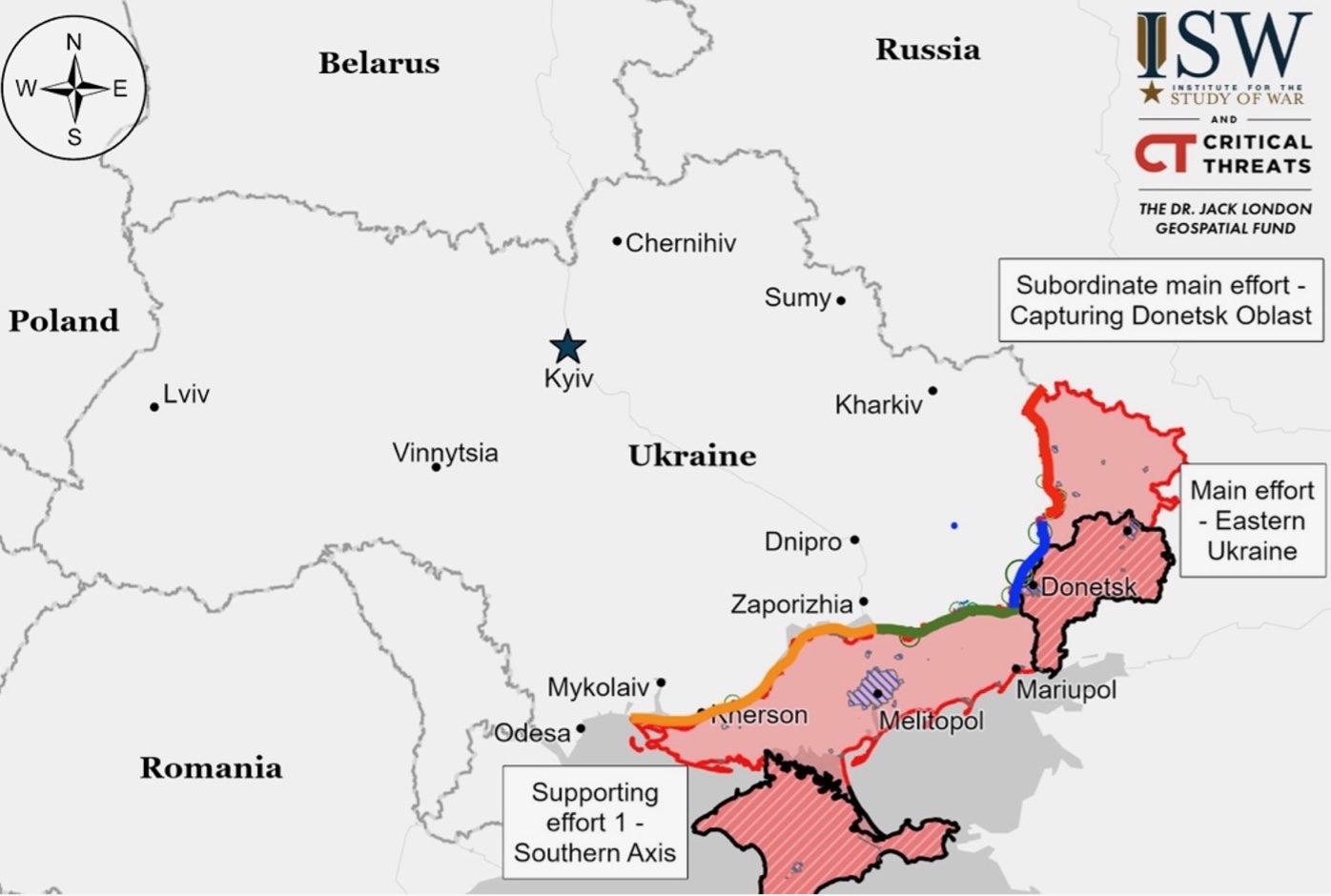
Luhansk Front – Initiative Russia
Donetsk Front – Initiative Russia
Zaporizhia Front – Initiative Russia
Kherson (Dnipro River) Front – Initiative None
Russian forces attacked along the Kupyansk-Svatove-Kreminna line. Ukrainian forces defended against assaults at various locations, including southeast of Kupyansk, northwest and west of Svatove, southwest of Svatove, west of Kreminna, and south of Kreminna.
Fighting persisted in the Siversk area with no frontline changes confirmed. Engagements occurred east, southeast, and south of Siversk.
Russian forces advanced east of Chasiv Yar and its outskirts, confirmed by geolocated footage. Reports of Ukrainian forces may withdraw from Klishchiivka are unconfirmed. Fighting persists northeast, near the Kanal, southeast, and south of Chasiv Yar.
Russian forces advanced northwest of Avdiivka, with confirmed gains. Geolocated footage shows movement southwest and west of Solovyove, with claims of further advances towards Sokil. Russian forces reportedly breached Ukrainian defenses northeast of Ocheretyne, operating in southern Arkhanhelske. Additional advances occurred in various fields and locations around Ocheretyne, Novokalynove, Keramik, and Novooleksandrivka. Fighting persists in several areas north, northwest, west, and southwest of Avdiivka. Russian forces are reportedly near Netaylove.
Russian forces reportedly took control of Paraskoviivka, though no confirmed gains were reported west or southwest of Donetsk City. Reports claim Russian advances in fields southwest of Novomykhailivka and north of Volodymyrivka. Fighting persists west of Donetsk City near Krasnohorivka and Heorhiivka, and southwest near Novomykhailivka, Paraskoviivka, and Vodyane.
Russian forces made a confirmed advance in the Donetsk-Zaporizhia Oblast border area. Geolocated footage shows their progress in southern Urozhaine. Russian milbloggers claim control of the area and further advances near Novodonetske, though not visually confirmed. Fighting also occurred near Staromayorske.
Positional fighting persisted in western Zaporizhia Oblast, with no confirmed frontline changes. Reports suggest Russian forces raised a flag in Robotyne, but conflicting claims state Ukrainian forces maintain control. Engagements also occurred near Bilohirya and Mala Tokmachka.
Positional fighting continued in eastern Kherson Oblast near Krynky.
Ukrainian Civilian Victims Of War
The casualty count of Ukrainian civilians in the past 24 hours:
DEATHS: 5 INJURIES: 37
- Russia launched ballistic missiles at Odesa, injuring at least 14 people. Explosions occurred after an air raid alert, hitting a postal depot owned by Nova Poshta. Photos and videos on social media show fire and smoke. Nova Poshta assured no casualties among its employees and pledged full compensation for destroyed parcels. They also announced plans for additional bomb shelters in their depots.
- Russian troops attacked Hirnyk in Donetsk Oblast, killing two and injuring six. The assault, conducted with Uragan multiple rocket launchers, resulted in casualties including a 57-year-old woman and a 64-year-old man.
- Russian troops attacked Nikopol in Dnipropetrovsk Oblast, injuring four people. The strike involved artillery and a “kamikaze” drone. Among the injured were a 27-year-old woman and a 47-year-old man hospitalized with moderate injuries, along with two others who received medical care at home. Damage included a hospital, ambulance, school, sports facility, houses, utility buildings, power lines, and streetlights. Emergency services extinguished a car fire caused by the attack.
- The death toll from the Russian missile attack on Odesa on April 29 has increased to six after an injured man passed away in the hospital.
- Russian forces attacked Zolochiv village in Kharkiv Oblast, killing two and injuring 13, including a child, with KAB aerial bombs. The strike resulted in the death of a 62-year-old man and his 38-year-old daughter. A 77-year-old man and a 74-year-old woman were hospitalized, along with others wounded, including an 11-year-old boy. Administrative buildings, a bank, over 20 cars, and one house were damaged.
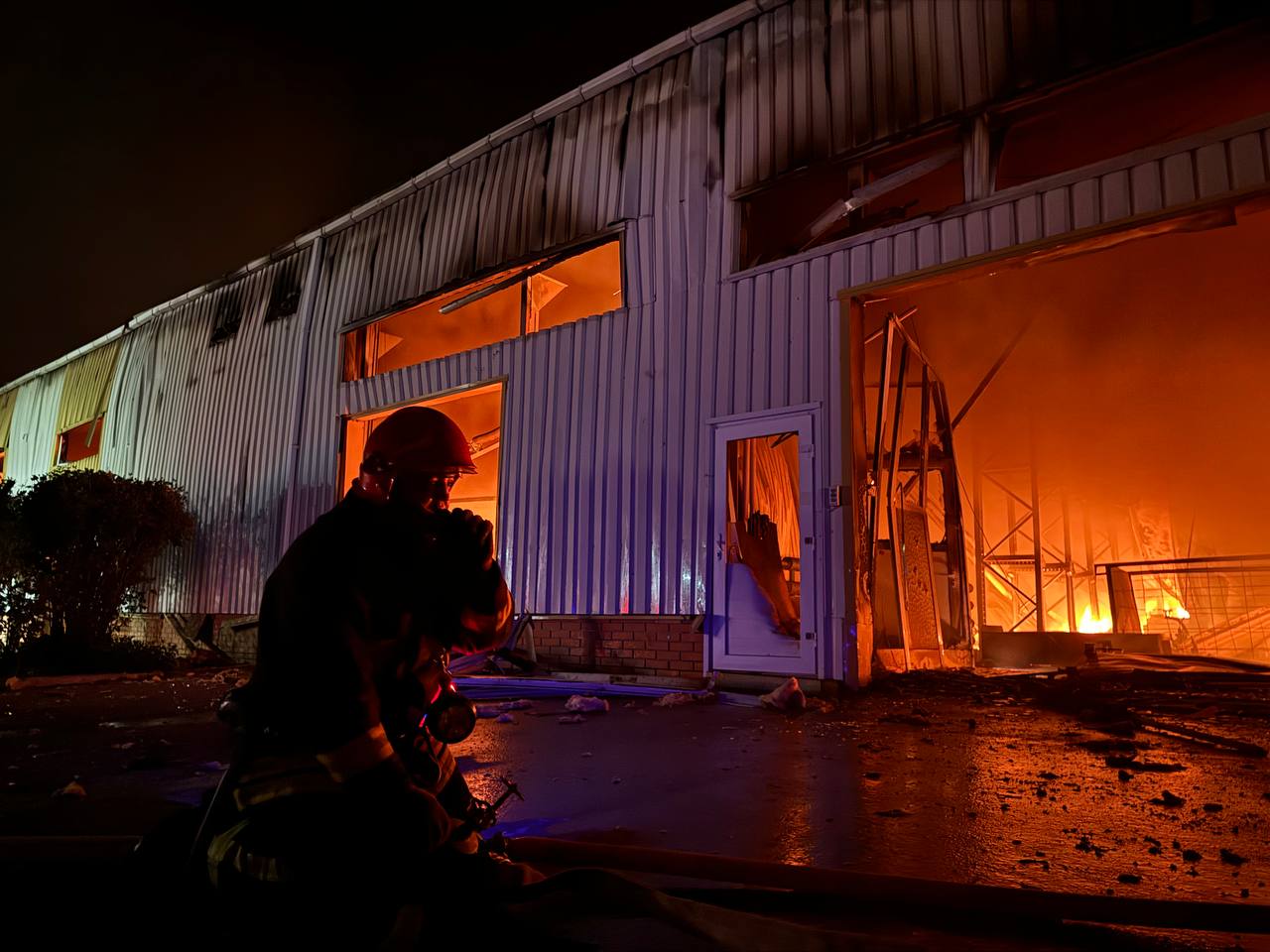 Russia launched ballistic missiles at the city of Odesa striking a postal depot of postal service Nova Poshta
Russia launched ballistic missiles at the city of Odesa striking a postal depot of postal service Nova Poshta
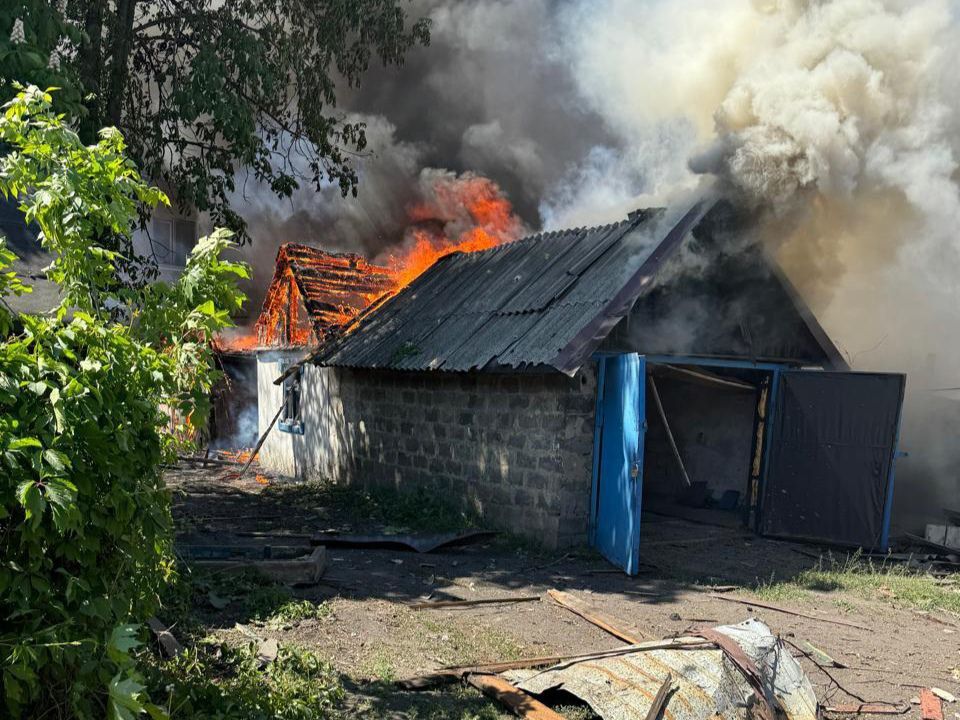 The aftermath of Russian attack on the town of Hirnyk
The aftermath of Russian attack on the town of Hirnyk
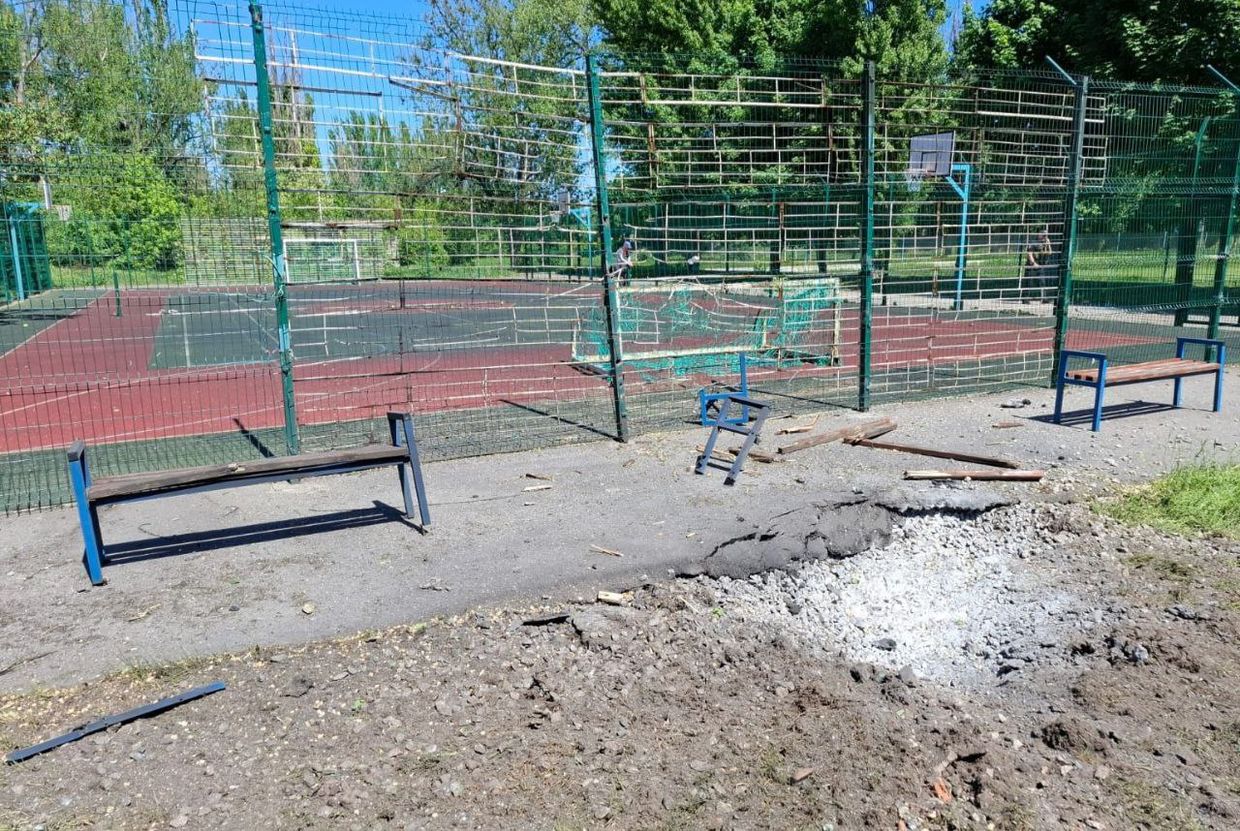 The aftermath of the Russian attack against the city of Nikopol
The aftermath of the Russian attack against the city of Nikopol
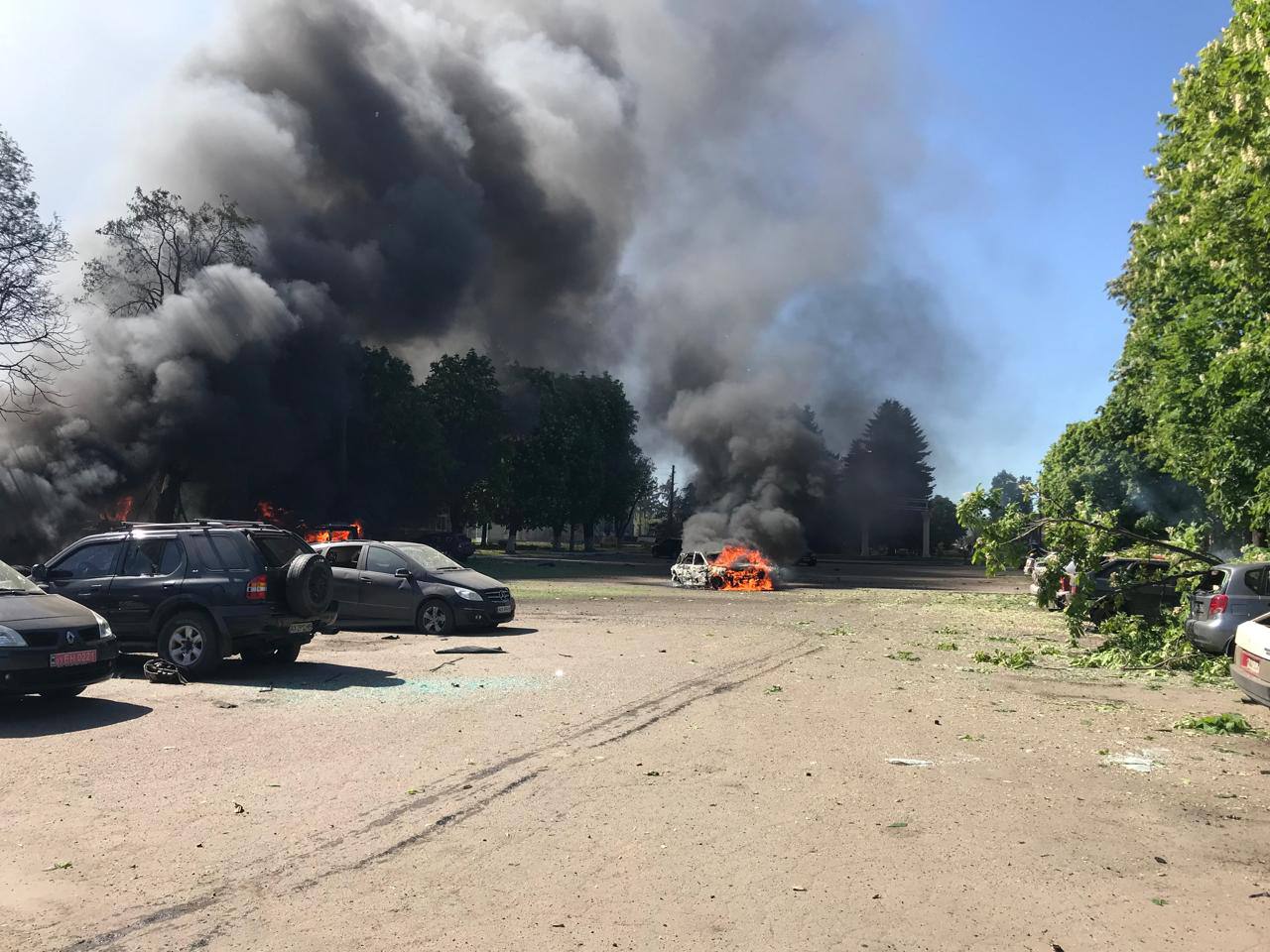 The aftermath of a Russian attack on Zolochiv
The aftermath of a Russian attack on Zolochiv
Ukraine News
Russian forces launched a limited missile strike on Odesa Oblast overnight. Ukrainian officials reported three Iskander-M ballistic missiles hit Odesa City, damaging civilian infrastructure. Geolocated footage shows a strike on Ukraine’s Southern Operational Command headquarters. Ukraine’s Main Military Intelligence Directorate reported Russian stockpiles of Zircon, Onyx, Kalibr, and Kh-69 missiles, with monthly production capacities listed.
Ukraine’s Economy Minister Yulia Svyrydenko announced that in April, the country exported over 13 million tons of products worth $3.3 billion, surpassing pre-invasion levels. The increase was attributed to a new sea corridor, ship insurance programs, and expanded trade routes. Since its opening, over 36 million metric tons of goods have been shipped through the new corridor. Additionally, the Unity ship insurance program and expanded Solidarity Lanes with Moldova and Romania have facilitated exports. Svyrydenko emphasized the importance of increasing non-raw exports for economic development.
Governor Ivan Fedorov announced the approval of projects for the first five underground schools in Zaporizhzhia Oblast by the Education Ministry. The concept of underground schools, initially introduced in Kharkiv, aims to ensure education continuity amidst regular Russian attacks. With a state subvention of up to Hr 500 million ($12.6 million), construction tender announcements are imminent, with three schools slated for Zaporizhia’s center and two elsewhere in the oblast. These schools will serve multiple districts and nearby settlements. The local administration envisions constructing a total of 10 underground schools. According to Vox Populi’s February poll, 81% of students in frontline regions opt for online learning. Deputy Education Minister Yevhen Kudriavets reported over 3,500 damaged educational institutions due to the invasion, with nearly 400 nearly destroyed, impacting one in seven Ukrainian schools.
Ukraine’s parliament, the Verkhovna Rada, will allow limited journalist access to cover plenary sessions and lawmaker activities. Journalists were previously restricted from attending sessions since the 2022 invasion. Up to 30 media representatives will be permitted, with COVID-19 measures in place. The decision aligns with security concerns amid martial law, emphasized by Speaker Ruslan Stefanchuk. Accredited journalists will receive instructions post-Orthodox Easter. The move responds to societal demand for media presence in the legislative process.
The Security Service of Ukraine (SBU) is conducting planned counter-intelligence exercises in Kyiv to assess protection against sabotage activities, focusing on state facilities and areas of mass gatherings. The operation involves multiple security agencies and includes inspections of offices, apartments, and public places for prohibited items. Citizens are urged to cooperate with law enforcement. The exercises, conducted under martial law, may involve passage limitations, road restrictions, and document checks. Earlier, the SBU detained two individuals in Kyiv suspected of creating fake accounts for Ukrainian security services as part of a Russian disinformation campaign.
Artem Marchevskyi, a Ukrainian-Israeli citizen accused by Czech authorities of running a Moscow-paid propaganda network, has found temporary protection in Slovakia, according to Czech news outlet Denik N. Marchevskyi, along with pro-Russian Ukrainian oligarch Viktor Medvedchuk, faced accusations of spreading disinformation and funding Kremlin-friendly politicians in the EU. After Czechia sanctioned both men, Marchevskyi relocated to Slovakia, whose government, led by Prime Minister Robert Fico, has shown sympathy toward the Kremlin. Marchevskyi had resided in Czechia since 2022, seeking refuge as a Ukrainian “refugee.” His departure from Ukraine was reportedly linked to investigations into his alleged cooperation with Russia. Plans by Prague to revoke his EU residency status were hindered by Slovakia’s decision to grant him temporary protection. Investigations into Marchevskyi, Medvedchuk, and their network are ongoing in several EU countries, including Belgium and Czechia.
Ukraine’s Allies
The first batch of F-16 multirole fighters for Ukraine may arrive after Orthodox Easter, according to Ukrainian Air Force Spokesperson Ilya Yevlash. Details on exact dates remain uncertain due to multiple delays. Initial reports aimed for delivery by New Year, but delays pushed the timeline to the second quarter of this year. Several countries, including Denmark and the Netherlands, pledged F-16s to Ukraine in 2023 to bolster airspace defense against Russian threats. Maintenance of the aircraft was proposed to take place in Poland, but it’s unclear if this plan will proceed.
The U.S. imposed sanctions on nearly 300 entities, including Chinese firms, aiding Russia’s war effort in Ukraine. The Treasury Department targeted about 200, while the State Department focused on over 80, aiming to disrupt Russia’s military industrial base and weapons programs. Sanctions hit entities in Russia, China, and other countries facilitating technology and material supply to Russia. Manufacturers of explosives chemicals and Russian gas-related construction firms were also sanctioned. This move follows warnings about China’s support for Russia’s military.
President Zelensky announced Ukraine’s efforts to secure bilateral security agreements with seven additional countries. Over 30 nations, including the U.K., Germany, France, and Canada, have already pledged support through such agreements. Negotiations are ongoing with Estonia, Spain, the Czech Republic, and the U.S., with recent talks held with the U.S. on April 29. These agreements aim to enhance Ukraine’s security against Russian aggression and provide support for defense, sanctions, and post-war reconstruction.
The Group of Seven (G7) pledged to reduce reliance on Russian nuclear fuel supplies, aiming for a diversified and Russian-free fuel chain, as stated in a joint declaration on April 30. Despite these efforts, Russia remains a major supplier of enriched uranium globally. G7 members aim to support countries transitioning away from Russian fuel sources. The declaration coincided with the U.S. Senate passing a bill prohibiting Russian enriched uranium imports. Additionally, the G7 condemned Russia’s occupation of Ukraine’s Zaporizhzhia Nuclear Power Plant, citing grave safety risks and international implications.
Poland’s government approved draft changes to the law on Ukrainian refugees, extending their protection status until Sep. 30, 2025, as reported by RMF24 on April 30. These amendments, set to be enforced from July 1 if passed by parliament, aim to support Ukrainian refugees, with Poland hosting around 1 million of them. The changes include introducing a new status for refugees and adjustments to state payment programs, such as mandatory school attendance for benefits and language support initiatives. Financial assistance for food and accommodation will require agreements with local authorities.
Life in Russian-Occupied Ukraine
Governor Oleksandr Prokudin announced the rescue of three children from Russian-occupied territory in Kherson Oblast. Since the invasion began, over 19,500 children have been abducted by Russia, with fewer than 400 returned home. The rescued children, including an 11-year-old girl and two boys aged nine and 13, received aid from humanitarian organizations and authorities. Prokudin confirmed that all children are safe and receiving necessary support. Additionally, Ukraine provided Qatar with a list of 561 Ukrainian children held in Russia, with the Russian authorities initiating processing.
Former Ukrainian Deputy Prosecutor General Gyunduz Mamedov reported that occupying Russian authorities in Crimea demolished a mosaic depicting Hutsul dancers from the Carpathian Mountains. The mosaic, cherished by residents, was destroyed to make way for a high-rise residential building, which Mamedov stated violates international humanitarian law protecting cultural heritage.
Russia News
Ukraine’s military intelligence agency (HUR) confirmed drone attacks on the Ryazan Oil Refinery and a refinery in Voronezh Oblast on May 1. Russian authorities reported the strikes earlier, claiming the Ryazan refinery was on fire. Ukrainian media later attributed the attacks to HUR. The Ryazan refinery experienced four explosions followed by a large fire, while details on the Voronezh refinery were scarce. Russian sources reported damage from a downed drone in Voronezh. The Russian Defense Ministry claimed to have downed six Ukrainian drones overnight. Recent drone strikes by Ukraine have targeted Russia’s oil industry, with a previous attack in Smolensk Oblast destroying fuel reserves. The Ryazan Oil Refinery was also targeted on March 13. The U.S. criticized these strikes, expressing concerns about global energy market stability, while Ukraine defended them as legitimate military actions against Russian assets. Ukrainian forces targeted the Rosneft oil refinery in Ryazan Oblast for the second time within a month, reportedly using drones for the attack. Footage from Ukrainian and Russian sources showed a fire at the refinery. While the Russian Ministry of Defense claimed to have shot down one drone, Ryazan Oblast governor Pavel Malkov confirmed a drone strike but didn’t specify damage. Emergency services are on site, and there are no reported casualties. The refinery, located in Ryazan city, is part of Rosneft and has a capacity of 17-18 million tons of oil per year.
Ukrainian drone strikes have disrupted Russia’s fuel supplies, causing a surge in gasoline and diesel prices for Russian consumers. Recent attacks targeted oil depots and refineries, leading to production suspensions and a drop in fuel supplies. Russia’s diesel exports have decreased, impacting its revenue. While criticized by the U.S., Ukraine sees Russian refineries as legitimate military targets.
Russian insider sources suggest that the criminal investigation involving Deputy Defense Minister Timur Ivanov may also implicate another deputy defense minister, Rustam Tsalikov. Tsalikov was reportedly summoned for questioning by the Russian Federal Security Service (FSB) and may face retirement and criminal charges related to Ivanov’s bribery case. Tsalikov, considered the third highest-ranking member of the Russian Ministry of Defense, has close ties to Defense Minister Sergei Shoigu. While these claims are yet to be confirmed, reports indicate a potential widening of the investigation.
Bloomberg reported that four Russian oil tankers, previously sanctioned by the US Treasury Department, have changed their names and flags. Owned by Sovcomflot, they now sail under Russian flags after being renamed. Despite name changes, their permanent identification numbers remain the same. The reason for this move, which highlights their Russian connection, is unclear and seems contradictory to distancing themselves from international sanctions.
The Russian Ministry of Defense (MoD) showcased around 30 captured Western-made Ukrainian military vehicles in Moscow’s Victory Park on May 1, aiming to portray Russian military equipment as superior. The display included U.S. Abrams tanks and other Western hardware, symbolizing Ukraine’s Western support amid the conflict. This exhibition, held at a World War II memorial, aims to draw parallels between Russia’s actions in Ukraine and the Soviet Union’s WWII victory. It coincides with Russia’s upcoming Victory Day celebration on May 9.
Russian Mobilization and Defense Industrial Base
Russian authorities are reportedly recruiting convicted criminals to fight in Ukraine. Trans-Baikal Krai Head Alexander Osipov approved the release of Dmitry Vedernikov, head of the “Metsenatovskie” criminal group, from prison to join the Russian military in Ukraine. Vedernikov, serving a 24-year sentence, left the penal colony for Ukraine in 2024 after being denied earlier requests. He claims two other group members also left prison to fight.
Russian authorities are recruiting internationally for military units in Ukraine, as revealed by the Ukrainian Main Military Intelligence Directorate. Many Nepalese citizens serve in the Russian 1099th Motorized Rifle Regiment in Luhansk Oblast, where desertions have occurred due to heavy losses, harsh treatment from commanders, and refusal to follow orders. Ukraine’s military intelligence reported on May 1 that Russian mercenaries from Nepal are deserting in large numbers due to heavy losses, unpaid salaries, and mistreatment by commanders. The mercenaries were recruited by Russia to fight in Ukraine, but many are now fleeing back to Nepal. Russian commanders blame their desertion on an earthquake in Nepal. This comes amid reports that over 18,000 soldiers from Russia’s Southern Military District have abandoned their posts, with 12,000 belonging to the 8th Combined Arms Army, often deployed in eastern Ukraine.
The Kremlin celebrated the Russian defense industry’s role in supporting the war effort. President Putin awarded individuals and enterprises for their contributions, including Sevmash and “Raduga” State Engineering Bureau. Defense Minister Shoigu emphasized the need for increased production to meet military needs.
Russia’s Defense Minister Sergei Shoigu has ordered an increase in weapons production to hasten deliveries to Ukraine’s eastern front, as disclosed by Russia’s Defense Ministry. No specific details were provided, but repairs to units on the front lines were also directed. The move aligns with anticipation of a Russian offensive campaign, expected by Kyiv to commence in late May or early June.
A Russian milblogger, previously active in occupied Ukraine, suggested that the prevalence of makeshift “turtle” tanks indicates shortcomings in Russian armor defenses against drone strikes. The blogger noted that current electronic warfare systems are ineffective against Ukrainian drones, with more potent options deemed too costly for widespread distribution by the Russian Ministry of Defense.
Russian Narratives and Propaganda
A Kremlin-affiliated Russian milblogger suggested that Baltic and Central European-Ukrainian logistics projects, coinciding with NATO’s Steadfast Defender 2024 exercises, are provocative actions against Russia. However, NATO’s exercises are defensive responses to Russian aggression against Ukraine and threats against NATO states, despite Russian misrepresentation.
Source Materials
Institute for the Study of War – understandingwar.org
The Kyiv Independent – kyivindependent.com
Kyiv Post – kyivpost.com
